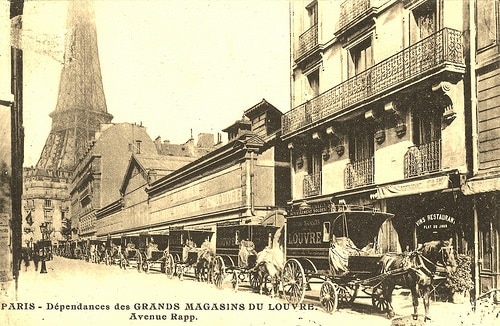Ninfa
15 November 2010Madoff et Moi
26 November 2010Ted Mooney at the Library

Ted Mooney is the author of is author Easy Travel to Other Planets (1981) , Traffic and Laughter (1990), and Singing into the Piano (1998). His latest novel, The Same River Twice (2010) is set in Paris.
He was senior editor at Art in America magazine for over thirty years and now teaches a graduate seminar at Yale University School of Art. Twice a recipient of Ingram Merrill Fellowships for Writing, he was awarded a Guggenheim Fellowship in 1983. We are looking forward to hearing more about The Same River Twice on Tuesday, 23 November at 19h30 and hope that you will join us for this presentation. Ted Mooney writes:
‘I’ve been bit puzzled, though hardly displeased, by the near universal response that The Same River Twice is some rare mash-up of “the literary novel” and a “thriller.” In any case, I certainly did not set out to write a “thriller.” It’s true that all four of my novels have been seen by others as “dark,” though I myself see them as merely realistic. And in a sense, TSRT is the culmination of all my work to date, in that I have always been fascinated by the thin, practically non-existent line between those who see themselves as decent, ordinary, law-abiding citizens and those whom they see as criminals. It all depends on how much you allow yourself to take in of what’s going on around you, and on the truly remarkable capacity possessed by human beings have for deceiving themselves in useful ways.
There’s not a doubt in my mind that I owe this insight to the 35-plus years I’ve spent in the international art world, where I worked for 32 years as senior editor at Art in America magazine. It was there that I taught myself to “see,” and, in my capacity as editor, learned, insofar as possible, to teach others to see. Whether you are standing before a work of art or the passing foot traffic on a street corner, you first have to purge your mind completely of words and the built-in assumptions they carry, and just look. After a while you will begin to notice how the constituent parts of what you are looking at fit together (or don’t), and some time after that you will be able to see what you are looking at whole. Then, when you begin letting words back into your mind again, they will be the right ones, and things you might otherwise have failed to notice become overwhelmingly clear. This habit of observation has led me to discover a large money-laundering operation, a GIA (Armed Islamic Group) leadership cell in Paris (two years before 9/11), and many other things I was not at all looking for. I was flattered but also a little amused by the Sunday New York Times Book Review critic who complimented me on my persuasiveness in making the reader believe that an ordinary Parisian dress designer could get involved in an international smuggling ring—amused, of course, because this actually happened. Things just like it happen every day. So in fact I simply used a true anecdote as a jumping off point from which to consider any number of other subjects.
Writing The Same River Twice allowed me to understand how I really see the world–my deepest article of faith–which is this: that every second of every day, people believe, often in perfectly good faith, that they are doing one thing when, in fact, they are doing something completely different. To me this is the real poignancy of being human: it’s tragic, it’s comic, and in its own peculiar way (after all I’m human, too), it’s beautiful. That’s what TSRT is all about.’

Read Library Director Charles Trueheart’s thoughts on The Same River Twice.


